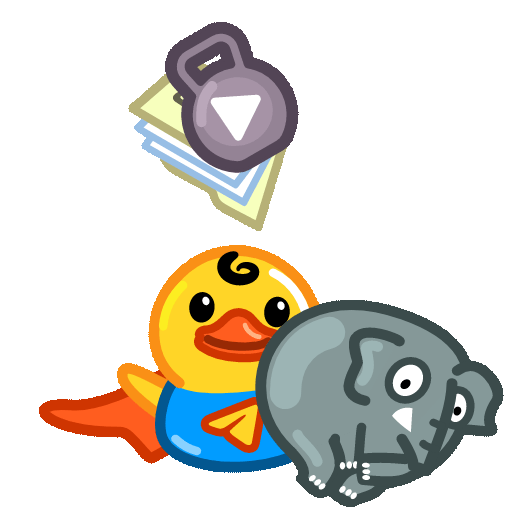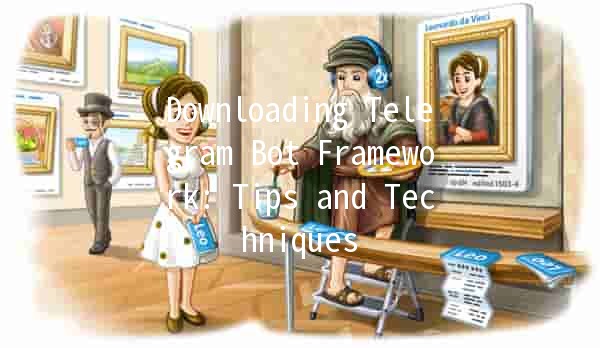Downloading Telegram Bot Framework: Tips and Techniques 🚀🤖

In the rapidly evolving world of messaging applications, Telegram stands out as a robust platform with a multitude of features, including its unique bot framework. This article delves into the downloading process and various tips and techniques to maximize productivity using the Telegram Bot Framework. Here, you will discover practical suggestions for harnessing the power of Telegram bots to enhance user engagement and streamline your workflow.
Understanding the Telegram Bot Framework
Before diving into the downloading process, it’s essential to understand what the Telegram Bot Framework is and its capabilities. This framework allows developers to create bots that can perform various tasks automatically, from answering queries to managing interactions within groups or channels.
With the growing demand for automation in communication, Telegram bots offer incredible versatility. They can be utilized for customer support, reminders, notifications, and even for educational purposes. The ease of integration and the extensive API provided by Telegram make it an attractive option for developers.
StepbyStep Downloading of the Telegram Bot Framework

To begin working with the Telegram Bot Framework, you need the right development environment. Here are the steps you should follow:
Install Python: The Telegram Bot API primarily supports Python, so ensure you have Python installed on your system. You can download it from Python's official website.
Install Required Libraries: You will need to install the `pythontelegrambot` library. This can be done easily using pip:
```bash
pip install pythontelegrambot
```
Verify Installation: After installation, you can verify it by running the following command in Python:
```python
import telegram
print(telegram.__version__)
```
Once you have your environment set up, the next step is to create your bot on Telegram:
Talk to BotFather: Open Telegram and search for the BotFather. This is the official bot for creating other bots. Type `/newbot` and follow the instructions to create a new bot. BotFather will provide you an API token that you will use to interact with your bot.
You can either write your bot’s code from scratch or utilize existing templates. Below is a simple example of a Telegram bot:
```python
from telegram import Update
from telegram.ext import Updater, CommandHandler, CallbackContext
def start(update: Update, context: CallbackContext) > None:
update.message.reply_text('Hello! I am your Telegram bot.')
def main():
updater = Updater("YOUR_API_TOKEN")
dispatcher = updater.dispatcher
dispatcher.add_handler(CommandHandler("start", start))
updater.start_polling()
updater.idle()
if __name__ == '__main__':
main()
```
This script sets up a basic Telegram bot that replies with a greeting when the `/start` command is issued.
Enhancing Productivity with Telegram Bots
Utilizing the Telegram Bot Framework can significantly improve productivity. Here are five specific techniques to make the most of your bots:
Explanation: Telegram bots can handle multiple inquiries simultaneously, providing immediate responses to common questions.
Example: Develop a FAQ bot that responds to standard questions about your services or products. This not only saves time for your support team but also enhances the customer experience.
Explanation: Bots can send scheduled messages or reminders to users.
Example: Create a bot that helps users remember their appointments or deadlines. By integrating scheduling features, the bot can send notifications at specified intervals.
Explanation: Engage your audience by using bots to create and manage polls or surveys.
Example: Set up a bot that sends out weekly polls to gauge user feedback on your services. This can provide insights into customer preferences and improve engagement.
Explanation: Bots can be programmed to share content from your website or blog automatically.
Example: A bot can be set up to periodically share links to your latest articles or news updates, keeping your audience in the loop without the need for manual intervention.
Explanation: Telegram bots can be linked with other applications and services, enhancing their functionality.
Example: Integrate your bot with a thirdparty API to offer services like weather updates, news feeds, or stock prices directly within the Telegram chat.
Common Challenges When Downloading and Managing Bots
As with any development process, you may encounter challenges when working with the Telegram Bot Framework:
Telegram imposes rate limits on the number of requests a bot can make within a specific timeframe. Ensure you manage your bot’s performance by caching responses and limiting the frequency of requests to prevent hitting these limits.
Bots need to handle various types of user inputs effectively. Implement error handling and user guidance within your bot so that it can respond appropriately to unexpected inputs. Use buttons and menus to simplify user interactions.
When developing bots, consider the security implications, such as user data handling and API key protection. Never hardcode sensitive information like API tokens. Utilize environment variables or configuration files to store this data securely.
To ensure that your bot is always available, consider hosting it on a cloud server. Services like Heroku or AWS provide resources that can help keep your bot running continuously without interruptions.
Frequently Asked Questions
To create a bot, you need to interact with BotFather on Telegram. Use the `/newbot` command and follow the prompts. After successfully creating your bot, you will receive an API token which is essential for integrating and managing your bot.
While the Telegram Bot API is languageagnostic, popular choices for development include Python, Node.js, and PHP. Python is particularly favored due to libraries like `pythontelegrambot`, which simplifies bot creation.
Yes, Telegram bots can send photos, videos, documents, and other types of media. Use the appropriate methods in the API (such as `sendPhoto`, `sendVideo`, etc.) to share media with users.
To keep your bot running in the background, deploy it on a cloud service or use process managers like `pm2` for Node.js or set up a cron job for Python scripts.
Inline queries allow users to interact with your bot while typing in a chat. Users can invoke your bot by typing a trigger word followed by their request. This feature can be leveraged for searching content or fetching data from external APIs.
The Telegram Bot API can handle a large volume of users; however, there are limits based on concurrent sessions and interactions. If your bot gains popularity, you may need to optimize its architecture for scalability.
Yes, you can monetize your bot by offering premium features, services, or subscriptions. Implement payment solutions like Telegram’s Payment API for processing transactions securely.
Use logging libraries in your bot’s programming environment to monitor its performance. Additionally, leverage services like Ngrok to expose your local server to the internet, making it easier to test webhooks and callbacks during development.
By grasping the essential techniques and understanding common challenges, you can effectively utilize the Telegram Bot Framework to streamline processes, enhance interaction, and foster user engagement in various domains. With the right strategy, Telegram bots can dramatically elevate your productivity and contribute positively to your organization’s goals.
Other News

如何在Telegram电脑版备份你的聊天记录🗄️

下載紙飛機後如何查看聊天記錄📱✉️

Download the Latest Version of Telegram in Chinese: Tips and Tricks 🚀📲
